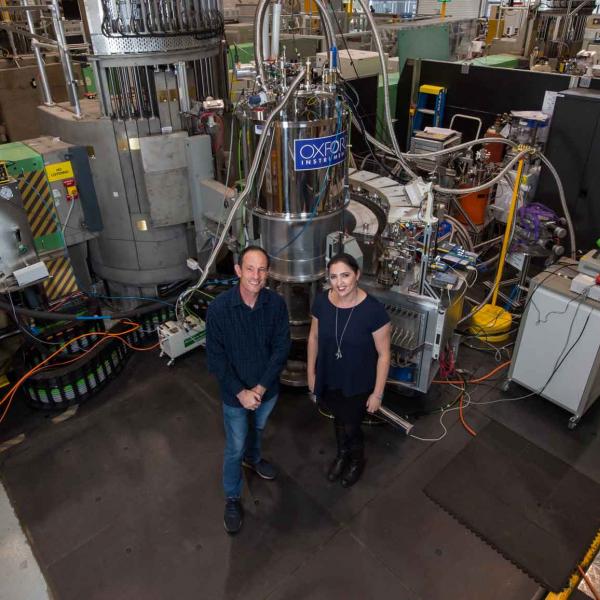
Wombat - High-Intensity Powder Diffractometer
Wombat is a high intensity neutron diffractometer located in the OPAL Neutron Guide Hall. It is primarily used as a high-speed powder diffractometer, but has also expanded into texture characterisation and single-crystal measurement, particularly diffuse scattering.
Powder diffraction is a method in which Australia has long had significant strength. Materials with light elements in the presence of heavy ones (e.g. oxides, borides, carbides, etc.) can be measured with neutron powder diffraction, including magnetic materials.
It is also a very useful technique for bulk samples or experiments in extreme environments (pressure, temperature, stress, magnetic and electric fields or combinations thereof). It is good for multiphase materials and for quantitative phase analysis, in which the presence of minority materials can be measured accurately.
We have two world-class powder diffractometers: Wombat high-intensity powder diffractometer and Echidna high-resolution powder diffractometer. In terms of speed and intensity, Wombat is the highest performance instrument at OPAL and one of the fastest neutron powder instruments in the world.
The high performance comes from the combination of the best area detector ever constructed for neutron diffraction with the largest beam guide yet put into any research reactor and a correspondingly large crystal monochromator.
Wombat has been used to explore a broad range of materials, including: novel hydrogen-storage materials, negative-thermal-expansion materials, methane-ice clathrates, piezoelectrics, high performance battery anodes and cathodes, high strength alloys, multiferroics, superconductors and novel magnetic materials.
The mission for Wombat is to provide scientists with a high-intensity diffractometer at the OPAL reactor which can be used to carry out high-impact science in cases where:
- The sample specimens are small. Wombat has been used to measure very small powder samples (30mg has been succesfully measured, down to ~10mg is possible.
- The samples are contained in complex sample environments. Wombat is routinely used to measure temperatures between 1.4 and 2000K (over a range of equipment), and has been used to measure magnetic fields to 8T and electric fields to 20kV....sometimes simultaneously (in the case of multiferroic materials)
- Rapid real time measurements. Wombat routinely measures to 1 minute time resolution and one shot measurements to 100ms are possible.
- Stroboscopic measurements on timescales down to 20µs. Wombat has been used to measure the real time electric field response in piezoelectric materials at frequencies up to 10kHz with multiple time bins.
Wombat achieves these results by combining the advantages of (i) focussing neutron optics in the monochromator system over a wide range of incident wavelengths, (ii) a large solid angle detector with position sensitive detection capabilities, (iii) an advanced data acquisition electronics and (iv) a radial collimation system which reduces background due to complex sample environments.
The instrument is named after the Australian mammal wombat Vombatus ursinus.






